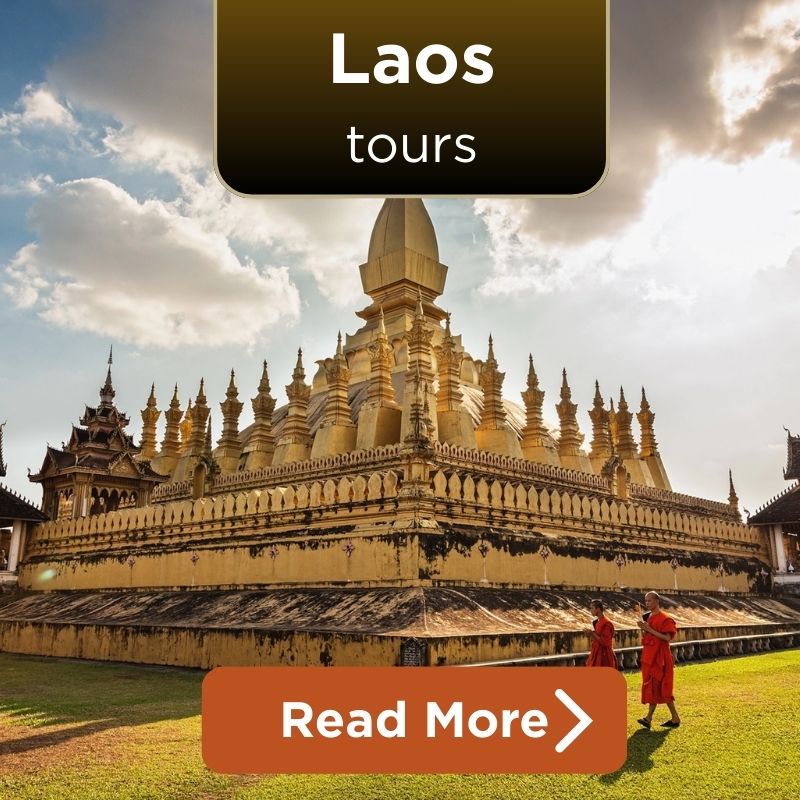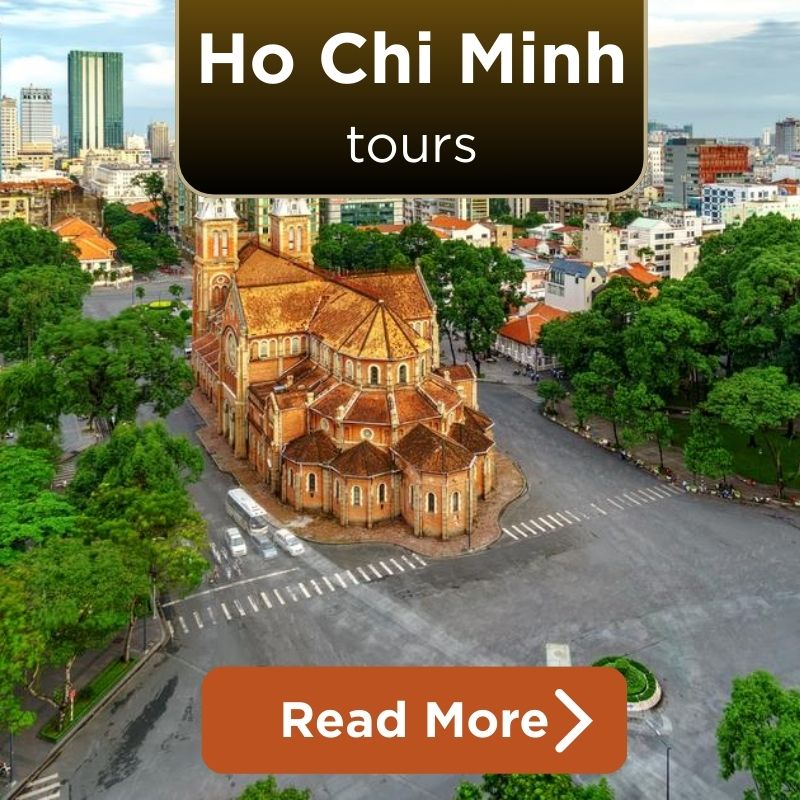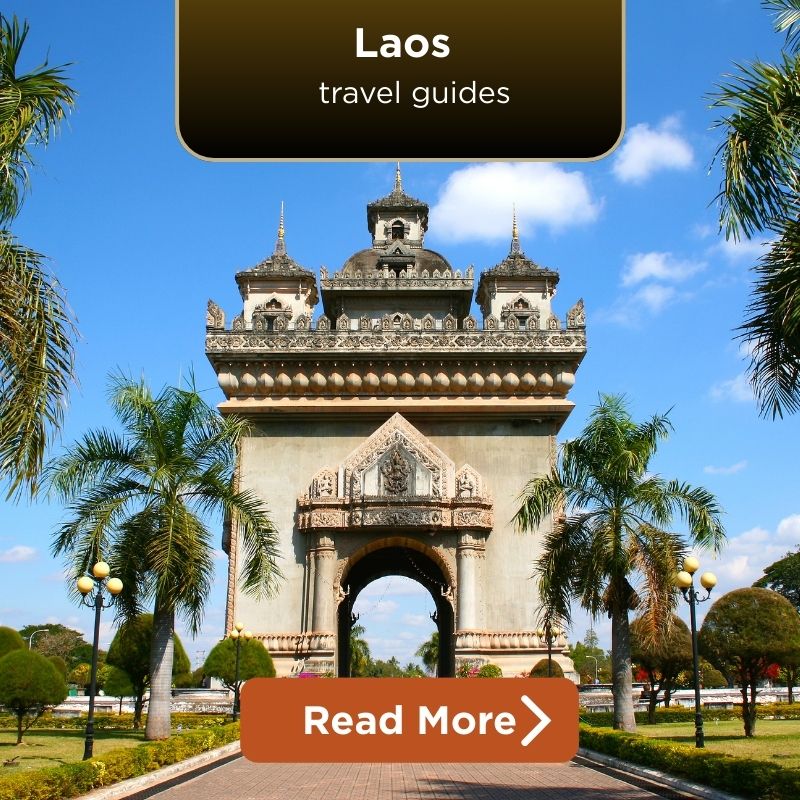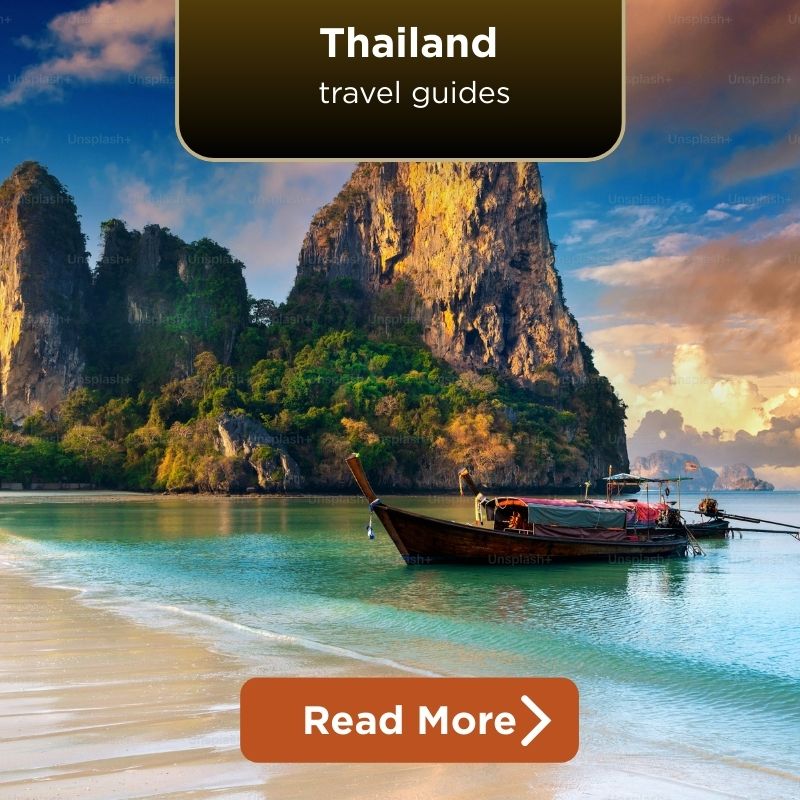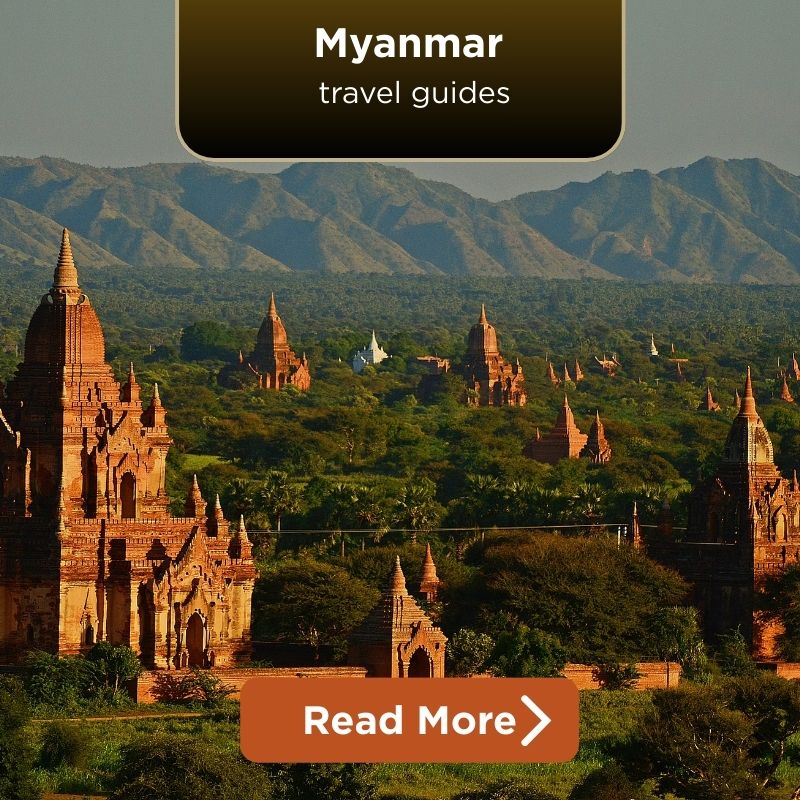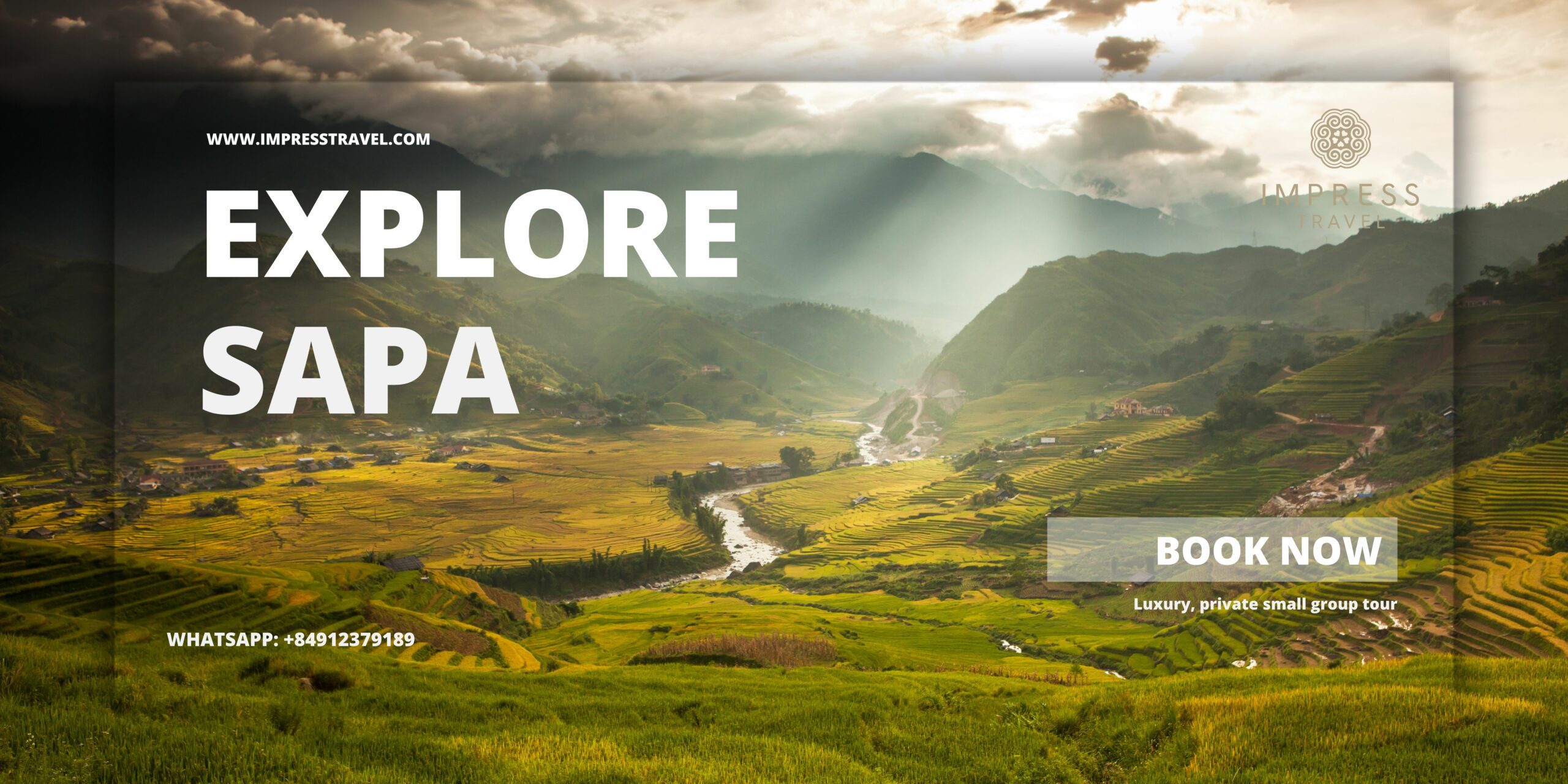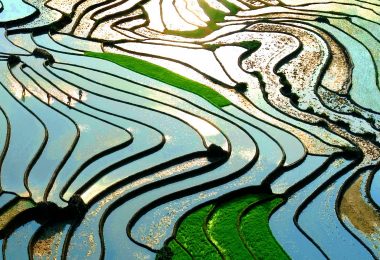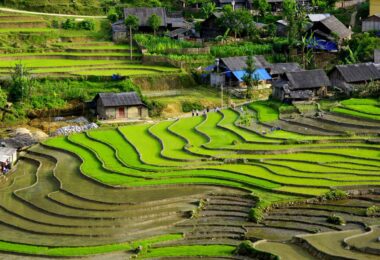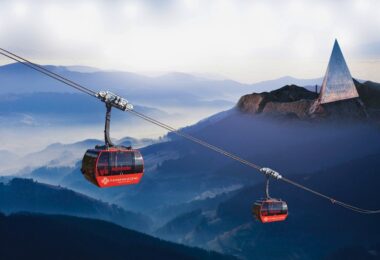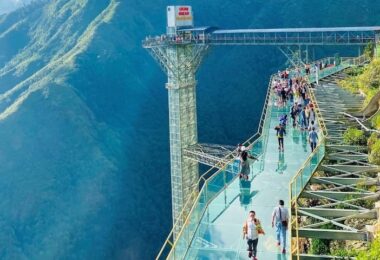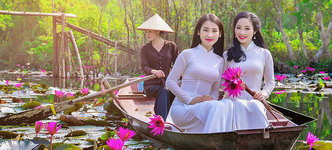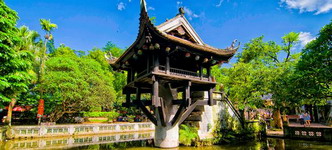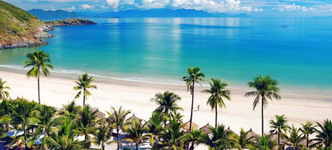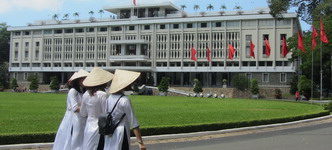What’s the Weather Like in Sapa in February?
|
Weather Element
|
Details
|
|
Average Temperature
|
8°C – 14°C (daily average around 11°C)
|
|
Sunshine Hours per Day
|
Approximately 4 hours/day
|
|
Humidity
|
Around 82%, but the cold weather keeps it feeling fresh
|
|
Rainfall
|
About 80mm/month, mainly as mist and light rain
|
|
Typical Day Progression
|
Foggy mornings → Sunny/mild afternoons → Chilly nights
|
|
Visibility
|
Sometimes limited to 20–30 meters due to dense fog
|
|
Snow Possibility
|
Rare, but possible snowfall at Fansipan Mountain
|
|
Compared to January
|
Slightly warmer, but still part of winter in Sapa
|
|
Compared to March
|
Cooler, foggier, with fewer blossoms but more mystique
|
Top Things to Do in Sapa in February
Conquer Mount Fansipan – The Roof of Indochina
If you’re visiting Sapa in February, one adventure you simply can’t miss is reaching the summit of Fansipan Mountain — Vietnam’s highest peak at 3,143 meters, famously called the “Roof of Indochina". This time of year offers fresh mountain air, gentle fog rolling across the ridges, and the first sightings of blooming azalea flowers along the slopes.
Two thrilling options to ascend to the summit:
Hike to the Summit
- Starting point: Begin at Tram Ton Pass, located approximately 15 km west of Sapa Town on Highway 4D. Alternatively, for a tougher and more remote trail, start at Sin Chai Village.
- Duration: 1 to 2 days of camping overnight on the mountain.
- What to Expect: Forest paths leading deep into the rural countryside, unpredictable weather, and support from village Hmong porters along the route. In Sapa’s February weather, the morning is misty and the temperature can drop below 8°C.
- Pro tip: Consult the weather in Sapa, Vietnam, always before trekking — thick fog can reduce visibility to just 20–30 meters.
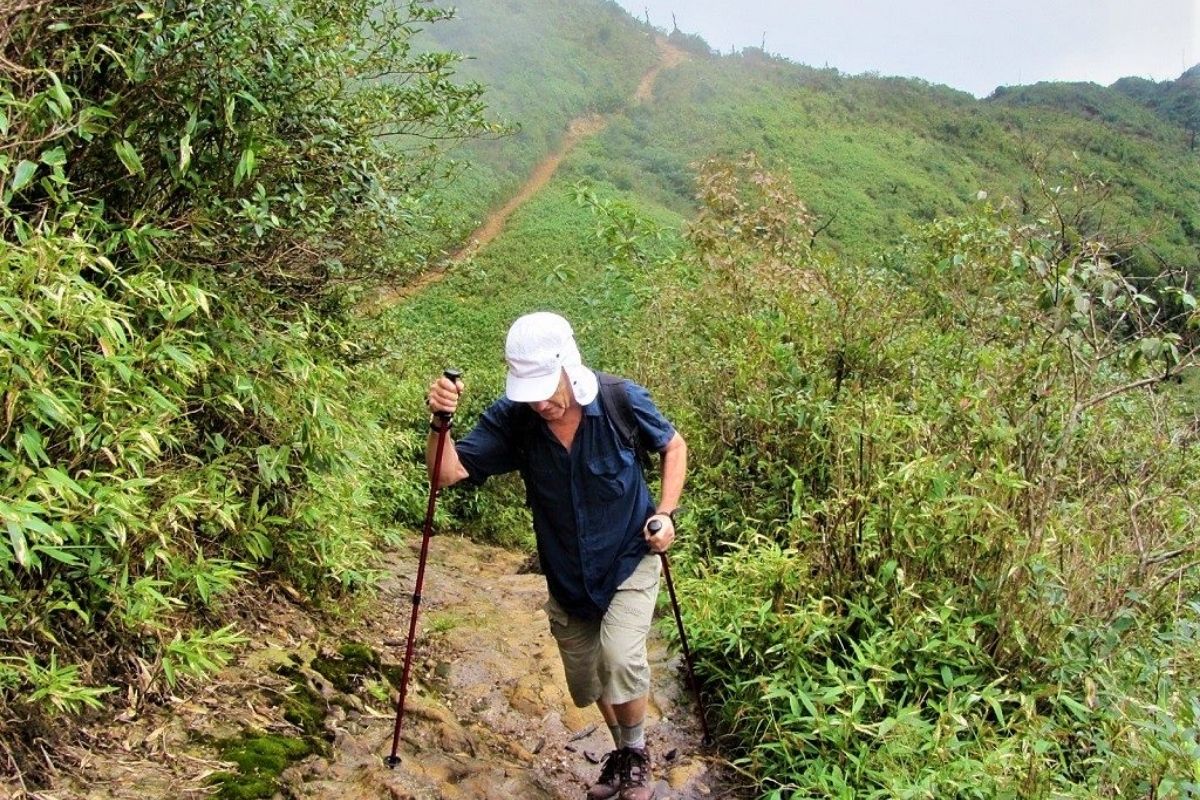
Hike to The Summit Fansipan (Source: vietnamcoracle)
Take the Cable Car
- Departure station: Sun World Fansipan Legend, located at 80 Nguyen Chi Thanh Street, Sapa Town.
- Ride time: 15 minutes of jaw-dropping scenery.
- What you’ll see: Flying over lush forests, cascading silver waterfalls, and valleys blanketed in fog — a feast for your camera lens.
- Don’t miss: At the summit, visit the Fansipan viewing deck and the peaceful Bich Van Thien Tu Pagoda surrounded by clouds.
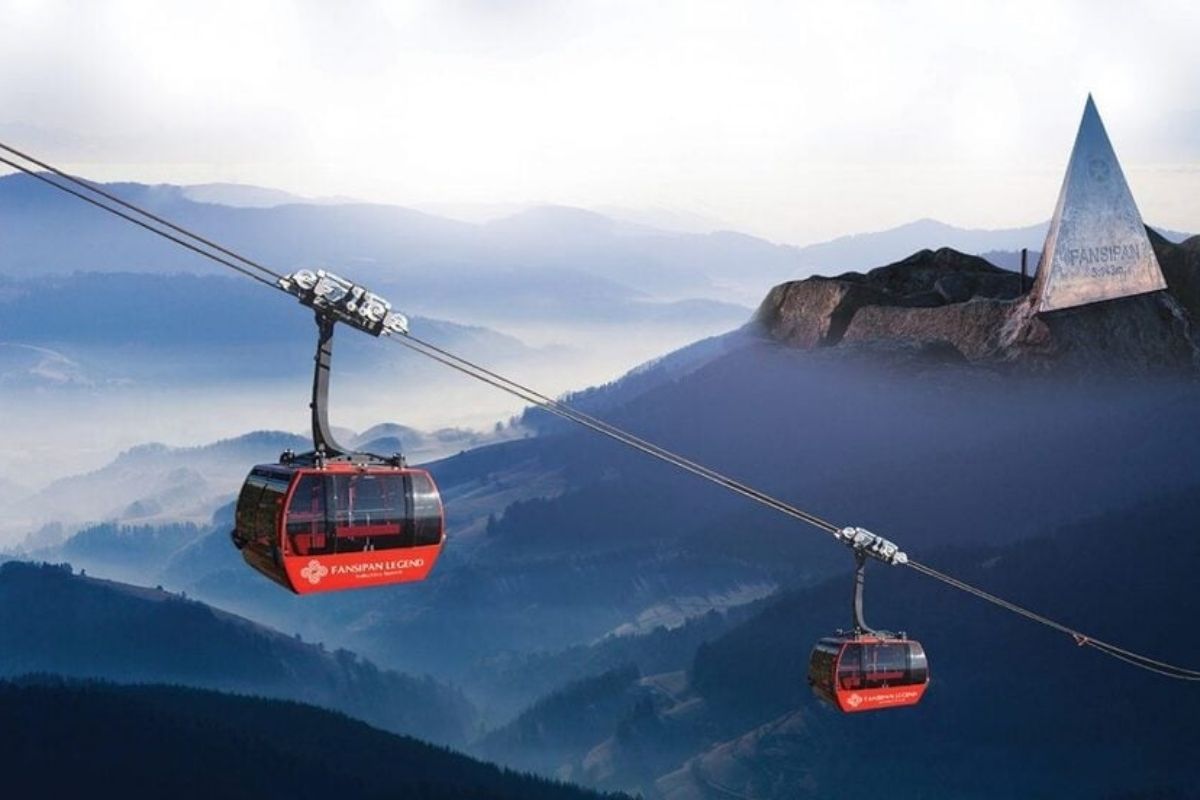
Reach Fansipan’s Peak by Cable Car (Source: crystalbay)
Celebrate Unique Highland Festivals – Only in February
One of the most affluent cultural experiences in Sapa, Vietnam, in February, is attending traditional festivals celebrated by local ethnic communities during the Lunar New Year. These rare, vibrant happenings take place only once a year — typically between the first 15 days of February — and provide you with a center-stage experience of venerable ceremonies, vibrantly costumed parties, and village-level festivities.
The following are four festivals that you won’t want to miss in February:
Tet Nhay Festival – Red Dao People
- Where: Ta Van Village, about 12 km southeast of Sapa Town.
- When: 1st to 3rd day of Lunar New Year.
- Highlights: Red Dao men perform ritual dances in honor of their ancestors. Expect fire rituals, bronze drums, and striking costumes dyed natural reds.
Gau Tao Festival – Hmong People
- Where: Lao Chai Village, just 7 km south of Sapa.
- Where: 2nd to 5th day of Lunar New Year.
- Purpose: The Hmong people organize this festival to pray for children, good health, and prosperity. There is a bamboo swing, spiritual rites, traditional songs, and games.
Roong Pooc Festival – Giay People
- Where: Thanh Phu Village, 25 km southeast of Sapa.
- When: On the 8th day of the Lunar New Year.
- What Happens: This festival blesses the land and announces the planting season. A pole-raising ceremony, buffalo rituals, and music echoed off the hills.
Village Sweeping Festival – Xa Pho People
- Where: Nam Sai Commune, approximately 30 km south of Sapa Town.
- When: Typically celebrated on the 12th or 13th day of the Lunar New Year.
- Cultural importance: The old man of the village performs a ceremony with a wooden sword to “sweep away" evil spirits, purify the homes, and bless the new year.
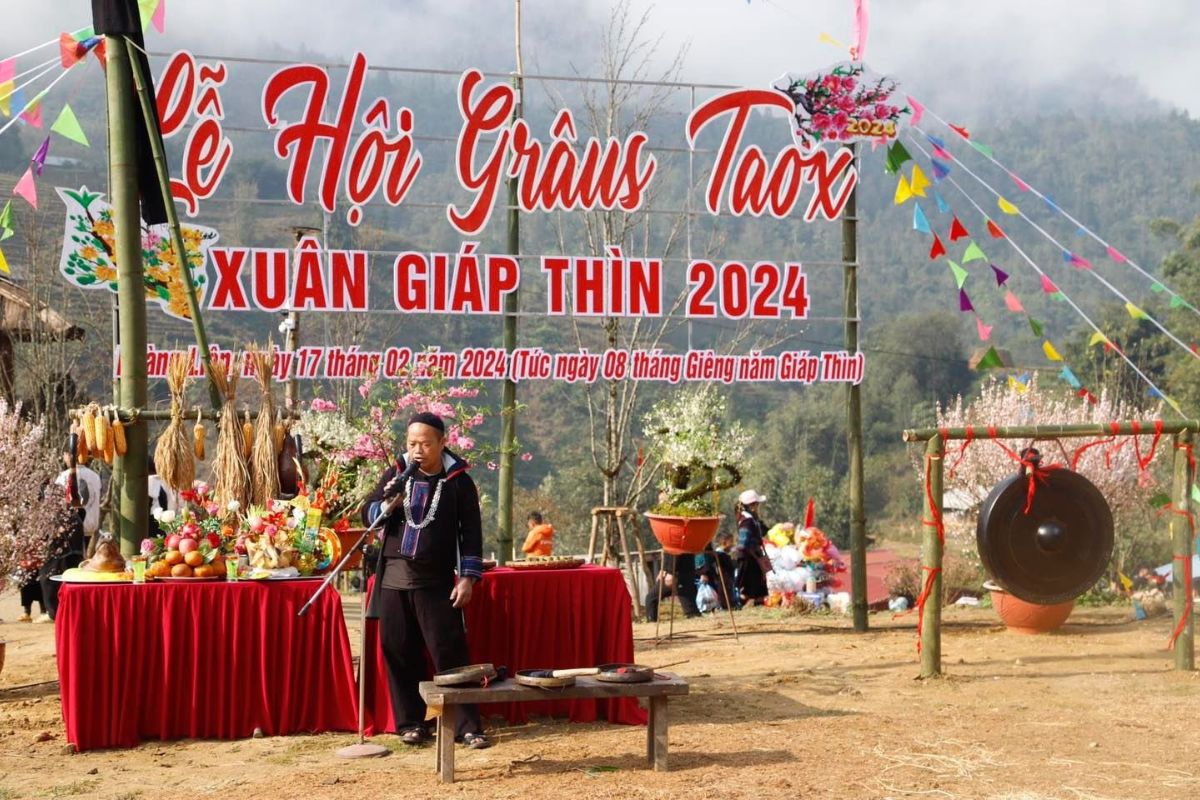
Gau Tao Festival (Source: sapa)
Enjoy the Spring Flower Blooms (Mid to Late February)
While the rest of Vietnam is warming up to spring, Sapa in February remains cold and foggy — and that’s exactly why the flowering time here is so magical. In mid to late February, the hillside begins to become a kaleidoscope of color. These are where (and when) to spot the optimal blooms:
Cherry Blossoms
- Best time: Early to mid-February (altitude and sunshine dependent)
- Where to go:
- Nearer to Sapa Lake, central Sapa Town
- Along Dien Bien Phu Street and near the Sapa Town Hall
- Experience: Stroll beside the lake as cherry blossoms flutter in the breeze — pink petals reflecting on the water and fog swirling gently around you. It’s one of the most peaceful and romantic scenes you’ll see in Sapa in February weather.
Azalea Flowers
- Best time: Late February to April
- Where to go:
- Along the Fansipan Cable Car route (Sun World Fansipan Legend)
- Hiking trails from Tram Ton Pass to Fansipan Mountain Summit
- Experience: The sea of pink and red blooms sticks to the cliff face, fighting its way through the mist as you hike upwards. Hiking or via cable car, you’ll spot them dotted in the green forests and ridges rising above.
Yellow Mustard Fields
- Best time: Mid to late February
- Where to go:
- Lao Chai, Ta Van, and Hau Thao Villages (8–12 km from Sapa)
- Experience: Extensive expanses of yellow mustard flowers cover the valleys. Ideal for trekking, photo-taking, and enjoying the serene rural landscape. Throw in a sheet of mountain mist, and it’s like living in a fantasy world — one of the most stunning scenes of your journey.
Pro tip: Weather conditions may influence flowering seasons. It is always wise to check the Sapa Vietnam weather before arranging your trip to the flower areas.
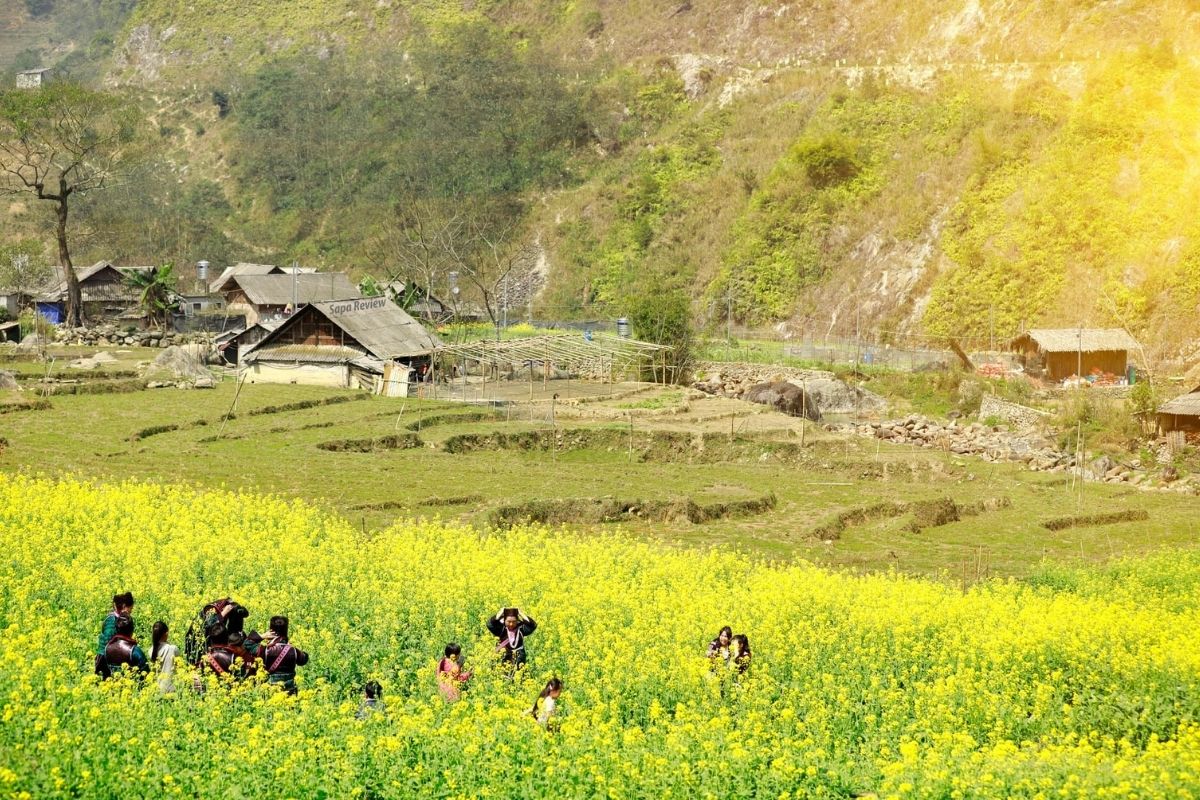
Yellow Mustard Fields (Source: dulichtaybac)
Experience Traditional Village Life (All Month Long)
So, is Sapa worth visiting in February? The answer is a resounding yes, and visiting the villages is one of the high points of the reasons why. They are living museums of rich cultural heritage, where life moves on as it did centuries ago, even in the chill of Sapa, Vietnam, in February.
Here are the most sought-after villages to visit, what to see, and how to get there:
Cat Cat Village
- Distance: A mere 2 km from Sapa Town (10-minute drive or 30-minute trek)
- Highlights: Traditional Hmong houses, water wheels, brocade-making workshops, mini waterfalls
- Things to do: Dress in traditional clothing, buy souvenirs, and trek a scenic valley trail.
Ta Van Village
- Distance: ~10 km from Sapa Town (in Muong Hoa Valley)
- Ethnic group: Giay people
- What to do: Homestay, share meals with locals and wake to mist sweeping across rice-terraced lands.
Ta Phin Village
- Distance: 12 km northeast of Sapa
- Ethnic group: Red Dao
- Special experience: Soak in a rejuvenating herbal bath made from the leaves of the forest, visit batik-dyeing workshops, and interact with local weavers.
Ban Ho & Y Linh Ho Villages
- Distance: 20–25 km from Sapa
- Why visit: Less crowded and more remote, perfect for hiking through valley fog and running with Tay and Black Hmong villages.
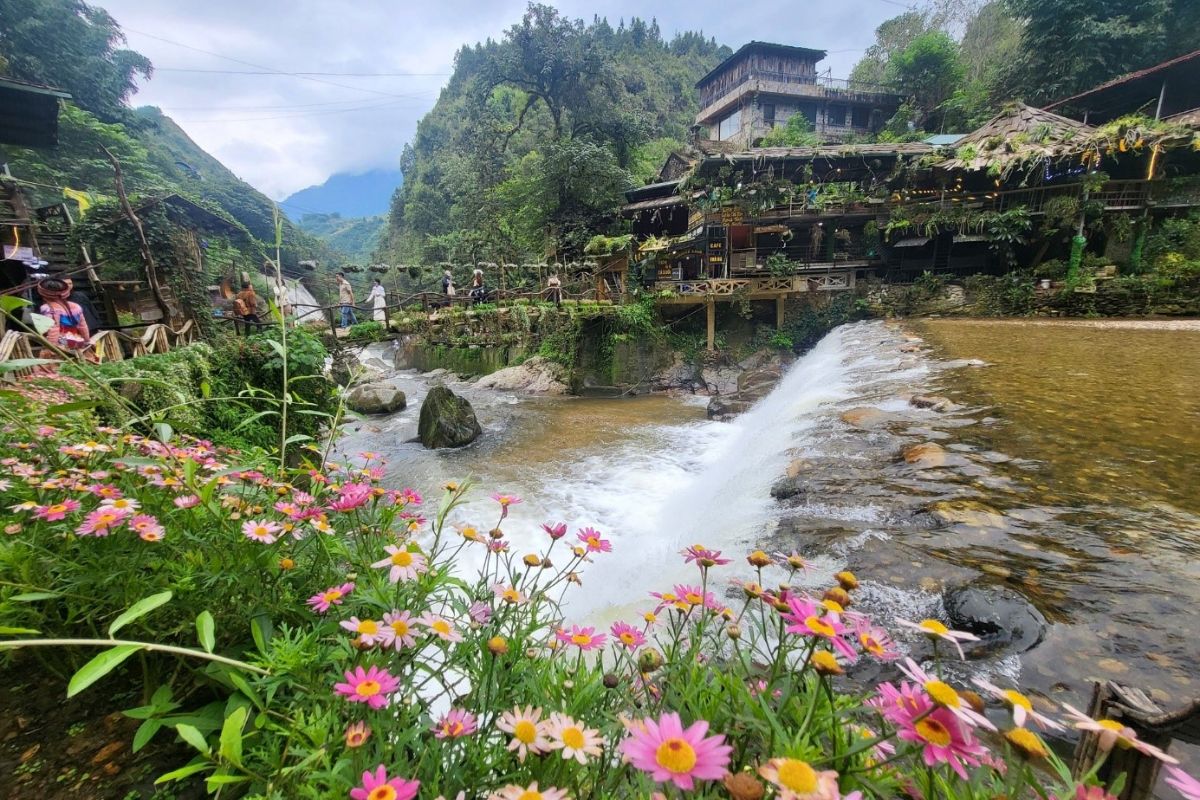
Cat Cat Village (Source: thiennhienmoitruong)
Visit Vibrant Local Markets (Sundays & Mondays)
Sapa, Vietnam, in February, is also the perfect time to experience real ethnic markets — colorful places full of color, noise, business, and culture. The majority of markets are open only once a week, and part of the fun is discovering when to show up.
Bac Ha Market
- When: Every Sunday morning
- Where: Bac Ha Town, about 100 km (~2.5–3 hours by car) from Sapa
- Why go: This is the largest ethnic market in the Lao Cai region. You’ll meet Flower Hmong, Tay, Dao, and Phu La vendors selling everything from silver jewelry and embroidered clothes to horses, pigs, and dried medicinal herbs.
- Don’t miss: Sampling corn wine and Hmong-style noodles in the food court.
Phong Hai Market
- When: Every Monday morning
- Where: Phong Hai Commune, Bao Thang District (~1.5 hours from Sapa)
- Why visit: Less touristy and quieter than Bac Ha, it’s ideal to buy spices, indigo-dyed clothes, and hand-woven baskets — all offered for sale by locals in their traditional outfits.
What to buy at these markets:
- Colored brocade scarves
- Locally made-sticky rice cakes
- Handcrafted silver earrings and armlets
- Herbal medications and forest spices are used for daily cooking and medicine
Markets open at 7:00 AM and close about midday, so arrive early. Be polite when taking photos, and have some money available — card machines are few in the mountains!
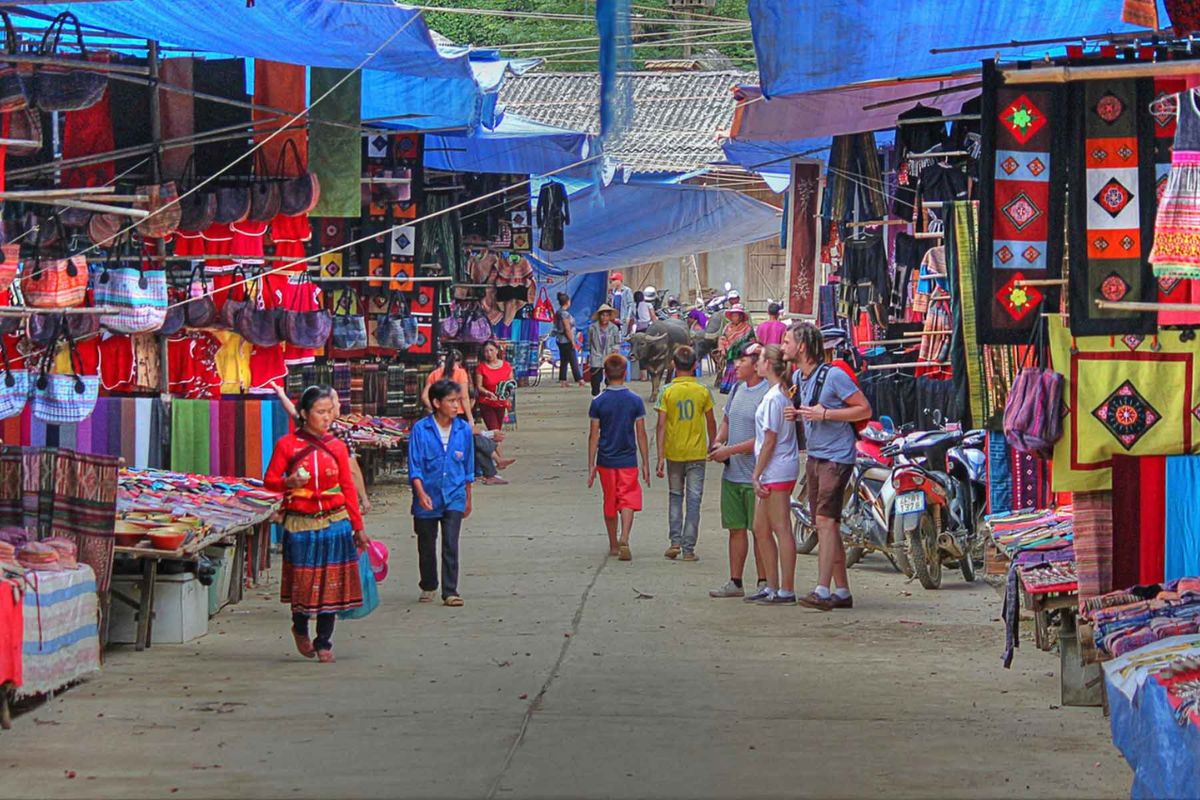
Bac Ha Market (Source: lug)
Travel Tips for Visiting Sapa in February
What to Pack for Sapa in February
Curious about clothing in Sapa during February? It’s around 8°C–14°C, with fog, drizzle, and sun frequently appearing on the same day. To keep warm on your adventure, bring along the following items:
- Waterproof jacket with insulated lining
- Thermal base layers (particularly for morning and evening)
- Gloves, scarves, and wool socks
- Comfortable waterproof shoes or hiking boots
- A folding umbrella or rain poncho
- Dry socks and undergarments (for rainy days)
- A compact flashlight if you’re staying in a far-off village that lacks bright light
Tip: Be sure to check the Sapa Vietnam weather for the daily forecast prior to stepping outside. It can help guide you in planning your day between fog, sunlight, or unexpected rain showers.
Local Etiquette During Festivals
Sapa’s February weather brings not just mist, but colorful festive highland festivities! When visiting local celebrations like Gau Tao or Tet Nhay, do remember:
- Dress conservatively and not in flashy colors
- Always request permission before photographing, particularly rituals
- If invited to participate in a ceremony, take cues from locals respectfully
- Small gifts (such as candy or fruit) if visiting a person’s home
Trekking Safety: When to Hire a Guide
February weather in Sapa is subject to rapid changes. Foggy moments, slippery paths, and low visibility make it advisable to hire a local guide for any trekking that goes beyond Cat Cat or Lao Chai:
- Guides use cutoff routes should trails be muddy or blocked
- They share information on rice terraces, customs, and myths
- Their fees are $20–$35/day — peace of mind for a reasonable fee
Handling Scams & Pushy Sellers
Sapa in February is less touristy, and this makes some vendors more pushy. At popular spots like Cat Cat Village or Sapa Market, you may be approached by local girls or kids selling bracelets, embroidery, or snacks.
How to politely say no:
- Smile and say “Khong, cam on" (No, thank you)
- Avoid making eye contact if you do not wish to purchase
- Do not accept freebies — they typically ask for money afterward
- Support genuine handicraft stalls if you want to contribute back
Conclusion
Sapa in February is misty, magical, and deeply moving — a quiet season where local culture, blooming trails, and cozy mountain life come together. If you’re dreaming of foggy mornings, vibrant festivals, and peaceful walks through terraced rice fields, this is the perfect time to visit. Just don’t forget to check the weather in Sapa Vietnam, and pack warm! Your next unforgettable journey begins in the clouds.
FAQ
Is February good for visiting Sapa, Vietnam?
Absolutely! February in Sapa is lined with blooming cherries and azaleas, vague in the morning fog, Rich cultural identity of local ethnic people through the activities of the Kashmiri New Year festival, Gau Tao, and Tet jumps. The Sapa weather in February might be cooler (average temperature from 8°C to 14°C), but it’s ideal for those looking to escape from the crowds with a tranquil, authentic experience and stunning views of highland landscapes. My advice for those of you who are planning to go there? Checking the weather in Sapa, Vietnam, is a must!
What is the best month to visit Sapa?
Every season in Sapa has its beauty; however, when to visit the Hoang Lien Son range depends on your travel interests:
- February-April: Good for festivals and the spring blooming season
- May – June: The season of green paddy plantation
- September to October, early: Golden terraced rice paddy fields in the harvest season.
- December-January: Cold and crispy winter in Sapa, sometimes snowing on Fansipan Mountain.
If cultural immersion and lower crowds are what you’re in for, Sapa in February is great!
Is February a good month to visit Vietnam?
Yes! February is in the middle of the dry season in the North and the South of Vietnam, which makes it a wonderful month for traveling the length and breadth of the country. Indeed, the Sapa Vietnam that you’ll experience in February is cool, quiet, and blooming with seasonal enchantment. At the same time, cities such as Hanoi, Hue, and Ho Chi Minh City are sunny and happy with Tet (Lunar New Year) festivities.
What to wear in Sapa in February winter?
Not sure what to wear in Sapa in February? Here’s your essential packing list:
- Thermal layers (base and mid)
- Waterproof outerwear (jacket or poncho)
- Woolly socks, gloves, scarf, and toasty hat
- Comfortable hiking boots (preferably waterproof)
- Umbrella or cool rain parka in case of a drizzle here and there.
- Sleeping layers for rural homestays







